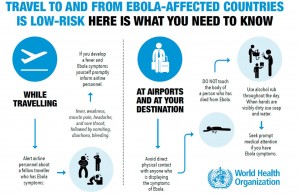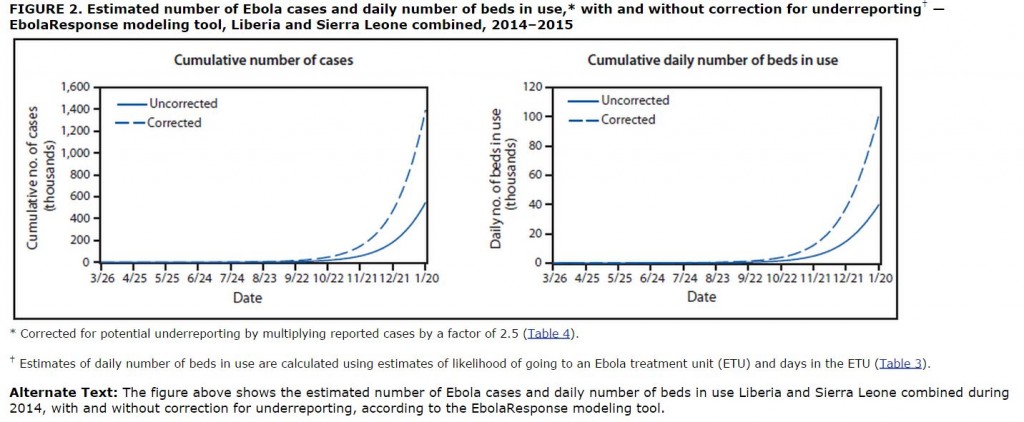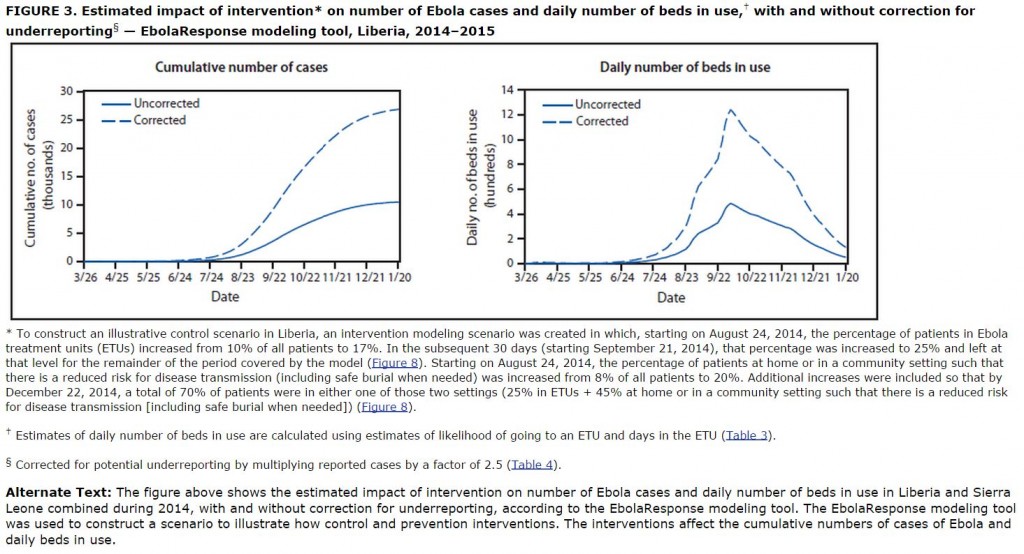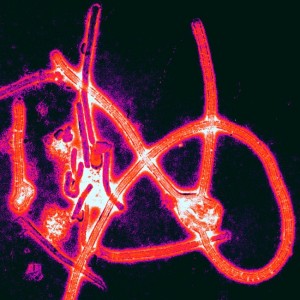Bigger Problem in US Than Ebola: Enterovirus D68 Spreading Respiratory, Paralytic Diseases in Children
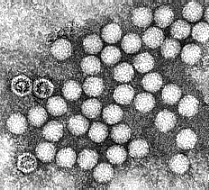
Electron micrograph of enterovirus particles. Photo by Linda M. Stannard, University of Cape Town as reproduced in Wong’s Virology online.
It has now been five days since we learned that Thomas Duncan, who came to Dallas from Liberia, tested positive for Ebola. His condition has been downgraded to critical, but so far none of his contacts have come down with Ebola symptoms. Because those most likely to have been infected by him are now under close observation and have limited contact with others, it seems quite likely the disease will not spread in the US beyond the small handful of people under close monitoring.
By contrast, the US is in the midst of an ongoing outbreak of a virus that has put many children into intensive care units with severe respiratory illnesses. A handful of children in Colorado initially having respiratory illness have progressed to paralysis of some limbs and have tested positive for the virus. Four children who died from severe respiratory illness have tested positive for the virus but the CDC states that the role of the virus in these deaths is not yet known. Late yesterday, a medical examiner in New Jersey stated that the virus was the cause of death for a four year old boy.
The virus involved in this outbreak is Enterovirus D68. Background on the virology of enteroviruses in general can be found here, courtesy of Wong’s Virology online. There are five groups within the enterovirus genus. By far, the most well-known group is the one that comprises the polioviruses. Enterovirus D68 falls within the newest group of enteroviruses that are designated with numbers.
These are some of the smallest and simplest viruses known. The viral particle contains only a single piece of RNA. Inside the host cell, this RNA is turned into a single protein that then is capable of chopping itself into the four smaller proteins found on the viral coat. There is no membrane around the virus and the particles are stable at acid pH, so inactivation is best achieved with bleach or other disinfectants whose label say they are active against non-enveloped viruses.
The CDC released information on the outbreak on September 12, noting that hospitals in Kansas City and Chicago first alerted CDC to unusual numbers of children presenting with severe respiratory symptoms. The latest CDC information on the outbreak includes:
From mid-August to October 3, 2014, CDC or state public health laboratories have confirmed a total of 538 people in 43 states and the District of Columbia with respiratory illness caused by EV-D68.
The report continues:
EV-D68 has been detected in specimens from four* patients who died and had samples submitted for testing. The role that EV-D68 infection played in these deaths is unclear at this time; state and local health departments are continuing to investigate.
The difficulty for healthcare providers with this virus is that symptoms for those infected can range from very mild to severe. As also seen with poliovirus, only a small fraction of those infected get the most severe form of the disease. In the current outbreak, a very high proportion of the children with the worst respiratory symptoms already suffered from asthma:
Of the 19 patients from Kansas City in whom EV-D68 was confirmed, 10 (53%) were male, and ages ranged from 6 weeks to 16 years (median = 4 years). Thirteen patients (68%) had a previous history of asthma or wheezing, and six patients (32%) had no underlying respiratory illness.
/snip/
Of the 11 patients from Chicago in whom EV-D68 was confirmed, nine patients were female, and ages ranged from 20 months to 15 years (median = 5 years). Eight patients (73%) had a previous history of asthma or wheezing.
Parents and school administrators are being encouraged to monitor children with asthma more closely during this outbreak and to be especially vigilant about measures to prevent spread.
Transmission of the virus, according to CDC: Read more →

